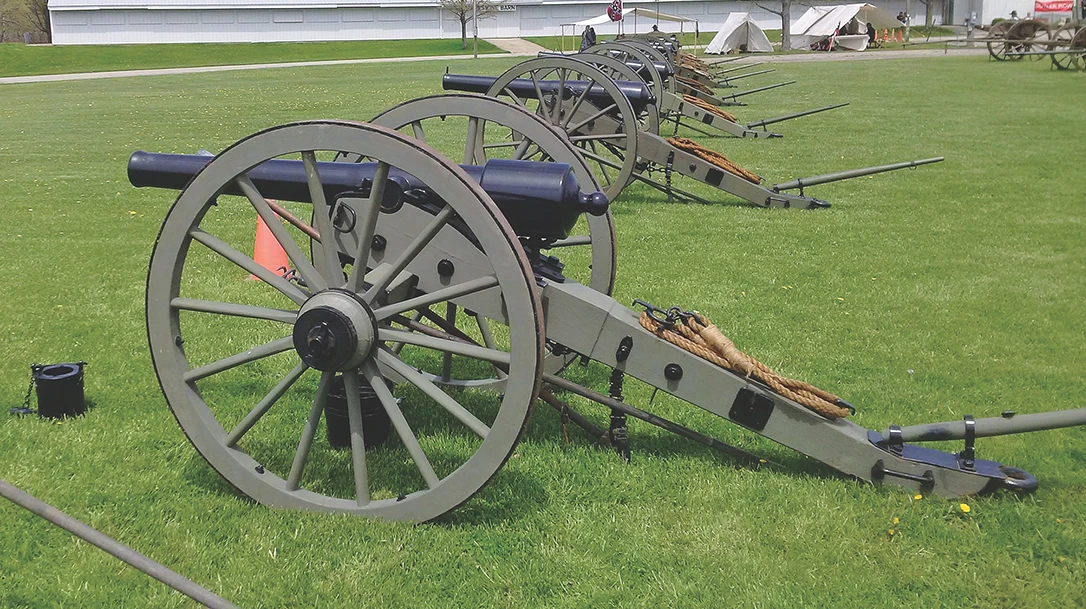There is something about cannons that can turn grown men into little boys. It is the roar of the cannon, the blast from the muzzle and just the raw power. Even cannons that are mere decorations can evoke thoughts of battlefield glory. Whether it occurs walking by an old courthouse or passing by a VFW hall, the sight of an artillery piece majestically standing guard is likely to turn the heads of most men faster than a bikini contest on a hot day. Simply put, and for reasons most women will never understand, guys just love cannons.
Owning A Cannon
This is why cannons can be the ultimate firearms for “gun collectors.” Cannons are truly guns on a larger scale. Yet it would seem that cannons would be out of reach for most mere mortals. The truth is that cannons are really no different than any other firearm when it comes to collecting. The guns might be bigger, far heavier and typically not easy to hang on the wall—but collecting cannons is just taking it to the next level.
However, cannons and artillery—the terms are often used interchangeably—aren’t the sorts of things you can readily buy at the local gun shop. But then again, how often is one likely to find a Colt Paterson or Winchester Model 1866 in the shop’s gun rack?
Advertisement — Continue Reading Below
Collecting cannons is actually much like collecting any rare, high-end firearms. It will often take networking with dealers and collectors, hitting the right antique arms shows and other events and no small amount of patience to even begin as a collector. That also means that cannons will always fetch reasonably high prices, and an original antique example in good condition will often hold its value.
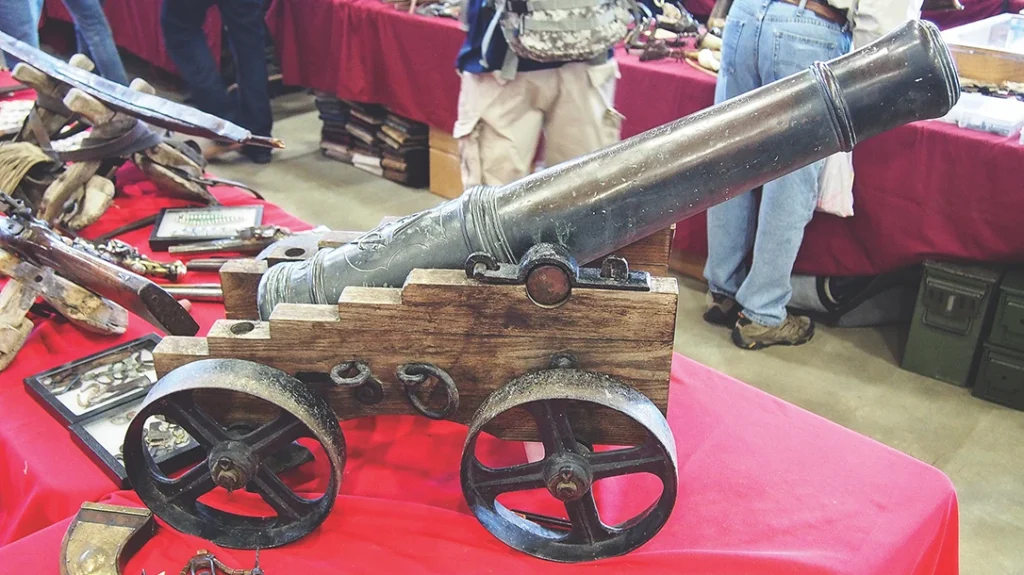
“Artillery is one of those areas that seem to be resilient to market trends—probably because demand remains higher than the supply,” said John F. Graf, author of Standard Catalog of Civil War Firearms.
Advertisement — Continue Reading Below
However, there are other important factors to consider: movies being made about a specific period that drums up interest, whether a notable collector has passed on, bringing more cannons onto the market or outside economic conditions that could force collectors to sell. This has certainly happened in recent years, as many older collectors of Union and Confederate artillery pieces have either passed away or simply sold off their collections after the 2008 economic downturn. And sadly, this could happen again now.
“Civil War artillery has dropped in value over the last few years, while World War II pieces have skyrocketed,” explained Graf. “Again, it is all due to supply and demand.”
Is It Legal?
Even once a collector has found a cannon to buy, it isn’t as easy as pulling out the bills or the credit card. As with any firearm, there is the issue of legality. Unfortunately, we live in a world where even antique firearms are in the crosshairs of anti-gun zealots, and cannons are no exception.
Advertisement — Continue Reading Below
“Federal laws in the United States for cannon and artillery pieces follow similar guidelines as firearms,” said Alex Cranmer, noted firearms expert and CEO of New Jersey–based International Military Antiques, one of the largest dealers of antique small arms. Cranmer has also appeared on History Channel’s Pawn Stars.
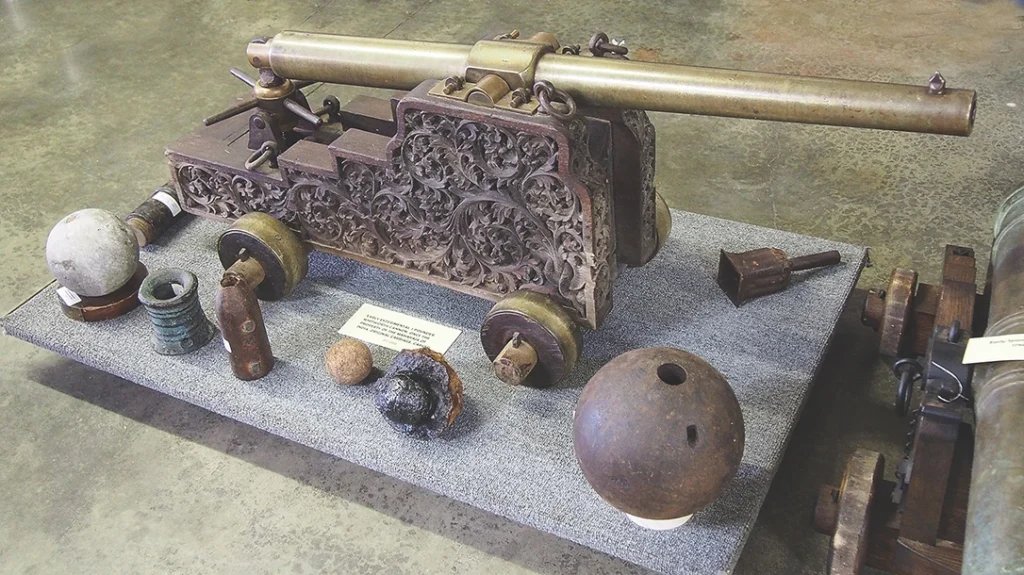
“If a cannon was manufactured in 1898 or earlier, typically it is legally classified as an antique and does not require a license. But this is at the federal level, so anyone interested in owning an antique cannon should also check with their state and local authorities,” Cranmer explained. “Modern cannons and artillery pieces (post-1898) require a letter from BATFE declaring the technology of the cannon is outdated. For example, some cannons that were made in the early 1900s are known to have exemptions due to their friction-primed systems.”
Advertisement — Continue Reading Below
It is important to note that if a cannon does not operate with an antique firing system and is loaded from the breech rather than the muzzle, typically the breech ring or breechblock must be legally “destroyed” in order not to fall under the BATFE “destructive device” classification.
“Guidelines for a destructive device classification and/or correct destruction of a breech ring or breechblock can typically be requested in writing from the BATFE’s Firearms Technology Industry Services Branch,” added Cranmer.
In other words, cannons that are loaded via the muzzle are typically not an issue, but anyone thinking about buying an antique cannon should consult local statutes. Research is always recommended to ensure that the cannon is compliant with federal, state and local laws.
Advertisement — Continue Reading Below
Ownership Issues
Where cannons present another legal question is who exactly has the title to the particular piece of artillery. The old saying that “possession is nine-tenths of the law” is never technically true, but when it comes to cannons there is another important consideration.
While a clear title—similar to a car or other vehicle title—likely doesn’t include vintage cannons that were imported from exotic lands or smaller artillery pieces that were war souvenirs, the issue is actually far grayer than one might expect. The reason is that many antique cannons, field guns and other pieces of artillery could be U.S. military property.
“I wouldn’t go near a piece of artillery that didn’t have a clear, clean title. A clear provenance has to show legal ownership and not just a chain of custody,” noted Graf.
Advertisement — Continue Reading Below
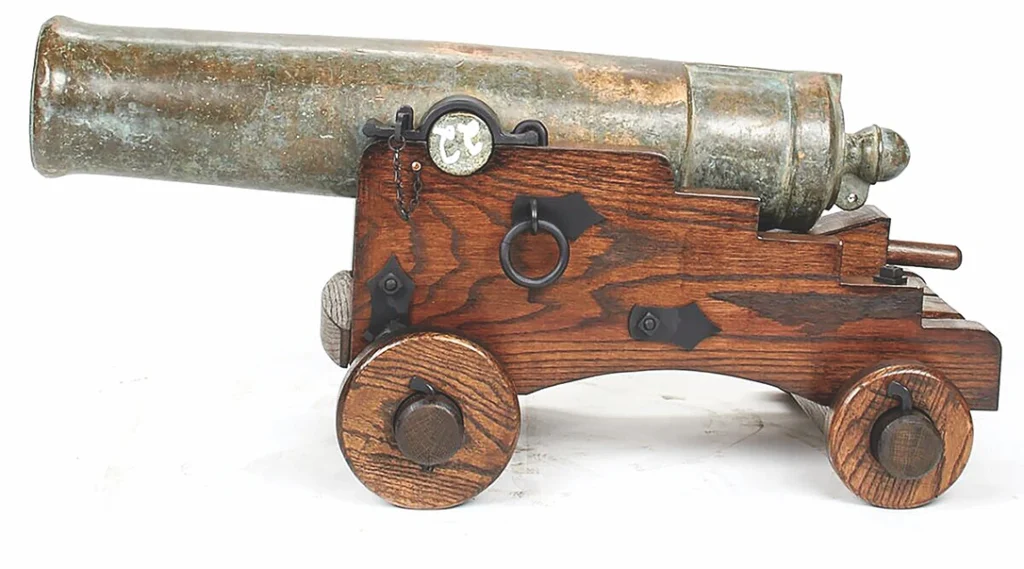
This is because, technically, an old cannon could be in someone’s collection, yet it is still very much the legal property of the U.S. military. This could be a piece of artillery that the U.S. Army captured and was never sold as surplus. Instead it could have been “loaned” at some point, and never released from the Army’s ownership. Over the years, cannons have traded hands to the point that collectors may believe that they are the legitimate owners. In fact, this happens far more often than it should.
“Too many current owners of field guns don’t realize that the pieces may have been stolen from cemeteries, memorials or battlefields,” warned Graf. “Fortunately—for the organizations, not the current owners—these missing artillery pieces are easier than ever to identify as a result of strong Internet communication channels.”
Advertisement — Continue Reading Below
It isn’t just “stolen” pieces, either. Oftentimes cannons have been wrongly sold off by old museums and veterans groups, when the sellers didn’t realize they didn’t technically have ownership of the artillery pieces. For this reason, collectors shouldn’t rush out to a VFW hall that is closing its doors and offer to buy any of the decorative items gracing its lawns. Those items are very likely still U.S. military property.
“As a reminder, field guns—as well as military vehicles, helicopters or naval ordnance—that came from closed VFW halls, Grand Army of the Republic (GAR) halls or American Legion posts generally never belonged to the organizations in the first place,” said Graf. “Most were on loan from Federal sources. The United States Army Tank-automotive and Armaments Command (TACOM) maintains a list of these pieces that it provided. They do go after individuals, groups and organizations that have taken possession of these pieces.”
Of course, there is the issue of buying from a dealer. In this case, it is best to ask questions and get paperwork if possible. “It is always helpful to have paperwork, but many times that is not possible,” said Cranmer. Always remember the warning caveat emptor (let the buyer beware)!
Advertisement — Continue Reading Below
Firing & Restoration
Numerous TV shows and YouTube videos have created the myth that an old cannon that can shoot is somehow worth more money. Collectors need to ask themselves whether that is true of the aforementioned Colt Paterson. If firing the cannon presents any risk to its structural integrity—not to mention the physical harm that could result to those firing it—then it shouldn’t be fired.
There is also the point that there are plenty of fine replicas that can make the thundering boom without subjecting a vintage piece to unneeded risk. Instead of asking whether a cannon can shoot, collectors should ask whether it is structurally sound.
As noted, most breechloading cannons are not legal and are considered “destructive devices,” and require a special transfer, which involves a lengthy background check.
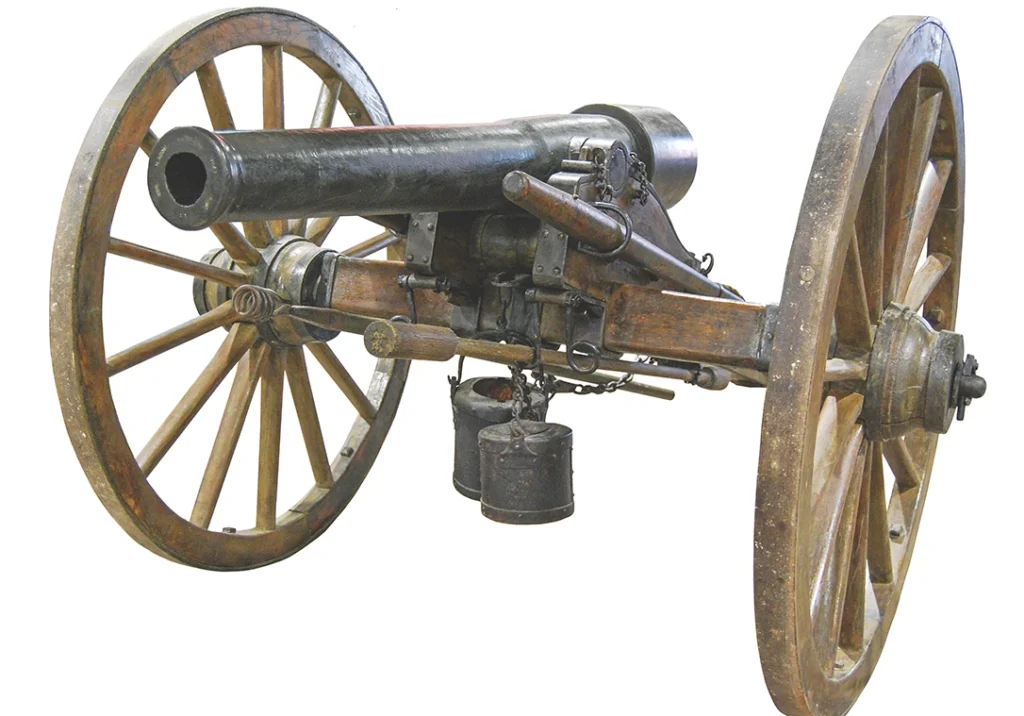
When buying an old cannon—especially one that shows age—the question should be where it has been over the past decades or centuries. Many cannons for sale today may have spent time underground, left outside in the elements, or worse, underwater!
A “ground-dug” cannon may show patina and even surface rust, but likely won’t be atrisk of catastrophic structural failure. The same cannot be said of cannon tubes that were submerged in water. Whether they were immersed in fresh water or salt water, cannons that are then exposed to fresh air can literally shatter if not properly treated through a process of electrolysis.
This brings up the issue of proper care and even restoration of old artillery pieces.Because a cannon can be an impressive item to display, the question of whether it should be restored often comes up. If an item is in good condition, it should always be left “as is,” and a restoration of any kind will always remove some of its history. That said, putting an old cannon on a newly made carriage shouldn’t be considered a faux pas or even something that will harm a cannon’s value, provided the cannon itself isn’t modified in the process.
“This is a frequent question, not just for cannon but for any old firearm, and the answer depends on what it is and how badly damaged it has become,” added Cranmer.
“For example, polishing an 18th century bronze cannon to a golden shine is a terrible idea and will drastically reduce the value,” he noted. “Collectors seek bronze cannons with centuries of patina. In fact, replica bronze cannons made in Southeast Asia are routinely ‘aged’ in order to appear old. On the other hand, a World War I field artillery piece, such as some 77mm Krupp guns, have made excellent candidates for restoration, which increases their value. Each cannon should be individually evaluated before any restoration project is attempted, as in many cases the cost of the restoration will be greater than the final value of the cannon.”
